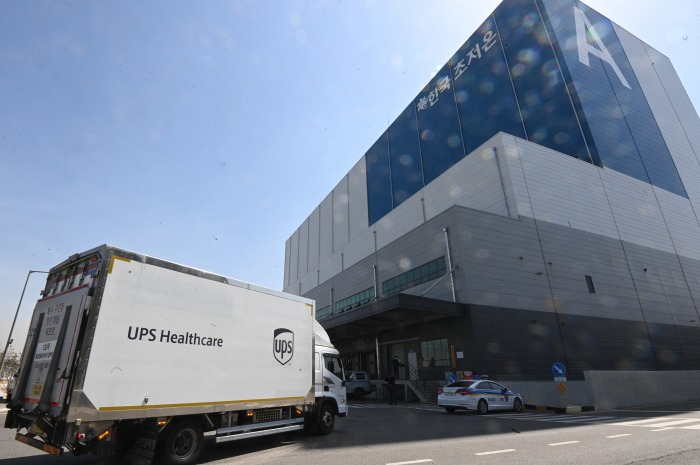EMP Belstar launches $300 mn Korea logistics fund
Including loans to be borrowed, the new fund is expected to invest more than $1.4 billion in cold storage facilities
By Sep 15, 2022 (Gmt+09:00)
LG Chem to sell water filter business to Glenwood PE for $692 million


Kyobo Life poised to buy Japan’s SBI Group-owned savings bank


KT&G eyes overseas M&A after rejecting activist fund's offer


StockX in merger talks with Naver’s online reseller Kream


Mirae Asset to be named Korea Post’s core real estate fund operator



Energy and infrastructure-focused private equity firm EMP Belstar has launched its second logistics fund targeting cold storage facilities in South Korea, after raising $300 million from a sovereign wealth fund, according to people with knowledge of the matter on Thursday.
The unidentified, overseas-based sovereign wealth fund is the only limited partner of the $300 million matching fund of EMP Belstar’s existing vehicle.
The existing fund will put an equal amount of money into an asset to be invested by the new vehicle. That means EMP Belstar will be able to pour a total of $600 million into cold chain distribution centers to be built or in operation already.
Including loans to be borrowed, the blind pool fund will likely mobilize more than 2 trillion won ($1.4 billion) for new investments in South Korea’s cold chain logistics network.
It has no specific investment targets yet, but sets its sights on new warehouses to be built.
The sovereign wealth fund had previously teamed up with EMP to finance the construction of two cold chain logistics centers in Osan and Uijeongbu in the Seoul metropolitan area through project funds.
This time around, the unidentified global investor opted for a blind pool fund for speedy investment execution.

New York-based EMP Belstar made its foray into South Korea’s cold chain storage sector by establishing Korea Superfreeze Co. in 2015.
It is the only South Korean company with the technology and resources to handle the widespread storage of vaccines that need to be kept at 70 degrees Celsius below zero.
Korea Superfreeze is also the first company in the country to use cold energy extracted from liquefied natural gas frozen at minus 162 degrees to refrigerate vast storage warehouses. It consumes less electricity than conventional warehouses.
It is now building additional super-cold storage facilities near the country’s two largest port cities: Incheon and Busan.
Alongside the rise in dual-income households, the explosive growth in the fresh food delivery market has been fanning demand for refrigerator and freezer storage facilities.
South Korea's fresh food delivery market is estimated to has surpassed 1 trillion won in value by 2020, compared with about 10 billion won in 2015.
The growing biopharmaceutical industry painted a bright picture for the cold storage market. Moreover, South Korea recently introduced new guidelines that biopharmaceutical products should be stored at a constant temperature between 2-8 degrees Celsius.
The stricter regulations reinforce expectations for upgraded low-temperature storage facilities in a country where a majority of some 800 cold chain distribution centers were built more than 10 years ago.
The average space of refrigerators and freezers per person is merely 0.3 cubic meter in South Korea, smaller than 0.48 in the US, 0.5 in New Zealand and 0.9 in the Netherlands, said EMB Belstar’s South Korea head Lee Joonho.
Write to Chang Jae Yoo at yoocool@hankyung.com
Yeonhee Kim edited this article
-
 LogisticsGoldman-backed Korea Superfreeze to build $2.2 bn facilities
LogisticsGoldman-backed Korea Superfreeze to build $2.2 bn facilitiesApr 26, 2021 (Gmt+09:00)
3 Min read -
 COVID-19Korea Superfreeze readies for mass COVID-19 vaccine storage
COVID-19Korea Superfreeze readies for mass COVID-19 vaccine storageDec 14, 2020 (Gmt+09:00)
2 Min read -
 Korean investors quickest to jump into new TALF fund: EMP Belstar
Korean investors quickest to jump into new TALF fund: EMP BelstarJul 07, 2020 (Gmt+09:00)
3 Min read


